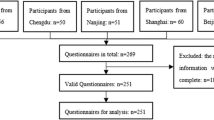Abstract
Objective
investigate the current usage of terminologies related to acupotomy through systematic search and analyze the pros and cons of each for proposing a standard terminology.
Methods
Seven medical journal databases were searched including PubMed, EMBASE, Cochrane Central Register of Controlled Trials, China National Knowledge Infrastructure, Oriental Medicine Advanced Searching Integrated System, KoreaMed, and Korean studies Information Service System using 10 candidate terminologies as searching terms. All studies published from their inception to July 26, 2017 were collected. Articles were included if the title stated one of the 10 candidate terminologies consistent with the definition of acupotomy. Priorly established frequency and consistency of each candidate terminology from medical databases were calculated and evaluated. Moreover, the pros and cons of each were analyzed to propose a standard terminology.
Results
A total of 112 studies in English databases, 1,129 studies in Chinese database, and 44 studies in Korean databases were included. The most frequently used terminologies were needle knife (35.71%), acupotomy (48.54%) and acupotomy (90.90%) in English, Chinese and Korean database, respectively. Overall, acupotomy and needle knife were the most frequently used. Others like acupotomology, needle scalpel, miniscalpel acupuncture and miniscalpel needle were used within 10% of the total searched literature. Acupotome, stiletto needle, sword like needle, and Xiaozhendao were rarely used. Acupotomy had the advantages of high frequency and consistency but lacked representativeness. Needle knife also showed a high frequency, but the consistency was poor. Though miniscalpel acupuncture and miniscule needle were used less frequently, they had advantages of inclusiveness and clarity.
Conclusion
A debate for standardization of the terminology is necessary. This preliminary research can provide a basic outline for the standardization consensus process, and we believe it is noteworthy to discuss miniscalpel needle and miniscalpel acupuncture along with acupotomy and needle knife on the subject.
Similar content being viewed by others
References
Zhu HZ. Summarization of acupotomology. System Engin Sci (Chin) 2006;8:1–15.
Wang QY, Zhuang LX. Inspiration of the development of acupotomy therapy to acupuncture and moxibustion science. Chin Acupunct Moxibust (Chin) 2012;32:481–483.
Li S, Shen T, Liang Y, Zhang Y, Bai B. Effects of miniscalpel–needle release on chronic neck pain: a retrospective analysis with 12–month follow–up. PloS One 2015;10:e0137033.
Lin M, Li X, Liang W, Liu J, Guo J, Zheng J, et al. Needle–knife therapy improves the clinical symptoms of knee osteoarthritis by inhibiting the expression of inflammatory cytokines. Exp Ther Med 2014;7:835–842.
Li S, Shen T, Liang Y, Zhang Y, Bai B. Miniscalpel–needle versus steroid injection for plantar fasciitis: a randomized controlled trial with a 12–month follow–up. Evid–Based Complement Alternat Med 2014;2014:164714.
Wei H, Xu JY, Jiang Z, Ye SL, Song HQ, Ning XT, et al. Effect of a traditional Chinese medicine combined therapy on adolescent idiopathic scoliosis: a randomized controlled trial. J Tradit Chin Med 2015;35:514–519.
World Health Organization. WHO international standard terminologies on traditional medicine in the western pacific region 2007. Available at: http://www.wpro.who.int/publications/who_istrm_file.pdf?ua=1. Accessed May 10, 20173.
Liu YQ, Wang YX, Shi NN, Han XJ, Lu AP. Current situation of International Organization for Standardization/Technical Committee 249 international standards of traditional Chinese medicine. Chin J Integr Med 2017;23:376–380.
Zhang Y, Quan WC, Yin P, Li H, Jin F, Zeng GG, et al. Analysis on indications and dominant diseases of acupotomology. Chin Acupunct Moxibust (Chin) 2010;30:525–528.
Liu T, Peng YY, Zhu SP, Chen H, Li FY, Hong PX, et al. Effect of miniscalpel–needle on relieving the pain of myofascial pain syndrome: a systematic review. J Tradit Chin Med 2015;35: 613–619.
Jia L. The effect of acupotomy treatment of knee osteoarthritis: a systematic review and meta–analysis. Osteoarthritis Cartilage 2017;25:215–216.
Zhang Y, Guo CQ. Acupotomology: returning to the ancients and innovation of acupuncture. Chin Acupunct Moxibust (Chin) 2011;31:1111–1113.
Gu LJ, Li WH, Zhang B, Tang Y, Qin WK, Dong FH. Observation on the short term clinical curative effect of release with stiletto needle versus knife needle for treatment of early-middle knee osteoarthritis. J Tradit Chin Orthop Traum (Chin) 2016;28:30–34.
Qin WK, Zhao Y, Zhang K, Gu LJ, Fang W, Liu CY. Clinical evaluation of stiletto needle for pain of knee osteoarthritis. Chin Acupunct Moxibust (Chin) 2013;33:347–349.
Kao TK, Zhu H. Clinical experience of treating chronic temporomandibular joint dysfunction by acupotomology. J Chin Med Assoc Acupunct (Chin) 2003;6:79–82.
Liu FS, Zhang Y, Zhong DW, Guo CQ. Symbolmeta–analysis of acupotomology versus acupuncture for cervical spondylopathy. J Clin Rehabil Tissue Eng Res 2012;16:1622–1625.
Ji B, Guo CQ, Jin Y, Zhong DW, Chen YN, Guo MW. Effects of acupotome and electro–acupuncture on pain threshold and monoamine–neurotransmitters of central nerves in rats with knee osteoarthritis. Chin J Pathophysiol (Chin) 2010;6:12.
Pécsi D, Farkas N, Hegyi P, Balaskó M, Czimmer J, Garami A, et al. Transpancreatic sphincterotomy has a higher cannulation success rate than needle–knife precut papillotomy–a meta–analysis. Endoscopy 2017;49(9):874–887.
Samanta J, Dhaka N, Sinha SK, Kochhar R. Endoscopic incisional therapy for benign esophageal strictures: technique and results. World J Gastrointest Endosc 2015;7:1318–1326.
Chen M, Shen B. Endoscopic therapy in Crohn’s disease: principle, preparation, and technique. Inflamm Bowel Dis 2015;21:2222–2240.
Author information
Authors and Affiliations
Corresponding author
Rights and permissions
About this article
Cite this article
Yoon, SH., Kim, YS., Jo, HG. et al. Current Usage of Terminologies Related to Acupotomy: A Literature Research and Standardization Suggestion. Chin. J. Integr. Med. 25, 147–150 (2019). https://doi.org/10.1007/s11655-018-3015-1
Accepted:
Published:
Issue Date:
DOI: https://doi.org/10.1007/s11655-018-3015-1



